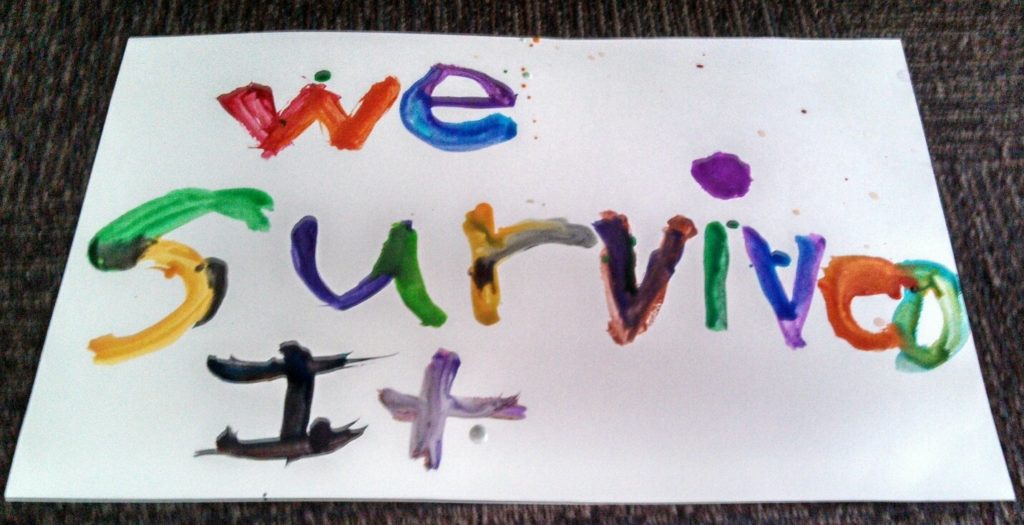by: Katie Thornton
In light of the recent hurricanes in Texas and Florida and the wildfires in several Western states, we wanted to offer some ideas for helping families cope in times of natural disaster. We’re mindful that many of our partners and TBRI Practitioners have been affected by these events, and our hearts are with you as you navigate this difficult time.

While we most often focus on relational trauma in our work, recent news has turned our focus to another risk factor of childhood trauma: natural disasters. We know that catastrophic natural events can cause a fear response in children, and their brains may stay in “survival mode” for an undefined amount of time post-event. It is likely that children affected by natural disasters, such as hurricanes, tornadoes, wildfires, and earthquakes, could display fear-based changes in behaviors, such as:
- anxiety
- changes in appetite
- hyper-vigilance
- fatigue
- increased insecurities (clinginess, worry)
- changes in learning (difficulties in comprehension and recalling content or sequential instructions)
- difficulties focusing
- changes in school grades or motivation
Additionally, these behaviors may not manifest until weeks or months down the road, and may be triggered by everyday occurrences that carry new meaning related to the traumatic event. Children may also feel the stress of their caregivers as the family rebuilds their home and life. Remember, children often have not yet developed the foundational coping mechanisms that many adults have from years of life experience.
Caregivers can effectively respond to children’s needs surrounding fear and anxiety through proactive and responsive trauma-informed strategies. In light of the heart-breaking destruction of Hurricanes Harvey and Irma, our team compiled a list of strategies for building resilience and bringing healing to children who have experienced tremendous changes and loss.
1. Turn off the news. Parents and children do not need to re-live the traumatic event.
2. Spend intentional time together as a family. Keep your children closer than usual when you can, and find ways to connect with them to re-establish felt-safety. Sometimes it may be necessary for children to stay with other family in a safe environment while primary caregivers sort through logistical issues (talking with insurance providers, FEMA, contractors, etc.). If your children are staying elsewhere, try to connect by phone every day, and intentionally talk with your children about the family’s safety, updated situation, and plans for moving forward.
3. Make even your unpredictable days predictable. Predictability is essential for children and teens, but is especially critical in times of crisis. Helping your children understand that the coming days are likely to be unpredictable can actually help establish predictability. One idea is to check in each evening to talk about what occurred that day and what you think will happen tomorrow. Then, re-visit the options the next morning for what could potentially happen to make the days as predictable as possible.
4. Create a safety plan or a coping kit as a family. Proactively planning for future disasters can also contribute to predictability and felt-safety. Coping kits or “self-soothing kits” can offer ways for children to calm themselves when they are triggered by the unpredictability of weather. Help your child include items such as drawing/coloring materials, sensory “fidgets,” headphones and music, or favorite books. Make a plan for where to store your child’s self-soothing kit and talk about it often so your child knows where to go and what to do when he or she is feeling anxious.
5. Provide time and materials for children to express themselves creatively. Give time and space for play, art, or other creative ways that children and adolescents can engage in activities that they usually enjoy. For example, drawing or using puppets will help young children cope where language cannot yet, and adolescents can engage in writing exercises or listening to songs with meaningful lyrics to relate to their experiences.
6. Proactively teach self-regulation strategies. Practice calming strategies with children to use in times of fear, such as deep breathing, chewing gum, or massaging pressure points.
7. Seek Professional Care and Guidance. If your child or family is struggling from the whirlwind of change, please seek professional help. Find a licensed professional counselor or social worker who has experience in trauma response to help your family process the events you have experienced. You can find a list of TBRI Practitioners here.
While no two families’ experiences – even within the same natural disaster – are alike, we hope that these tips spark ideas for you to creatively and effectively bring connection and deep healing to the children in your care.
Here are some more resources that may help guide your family through the aftermath of a natural disaster:
How to Help Your Children Process the Effects of Hurricane Harvey
Shelter from the Storm: A Parent Guide
www.zerotothree.org/resources/1663-shelter-from-the-storm-a-parent-guide
My Hurricane Story: A Guided Workbook for Children
https://www.mercycorps.org/my-hurricane-story
Parent Tips for Helping Preschool-Age Children After Disasters
8 Books To Help Children Understand Natural Disasters And Cope With Anxiety
Preparing Mental Health Before a Major Storm
www.apa.org/helpcenter/index.aspx